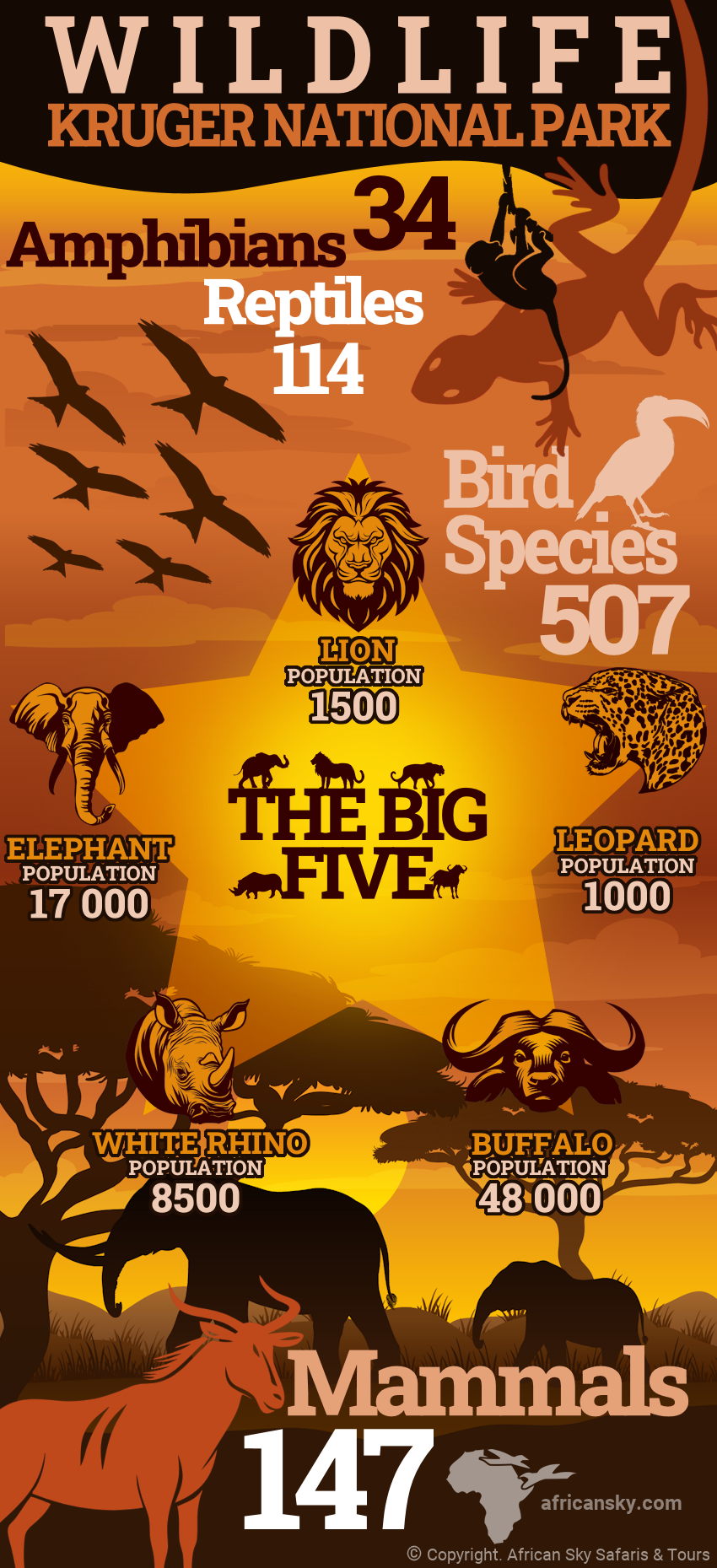-
Destinations

Top Destinations
Countries in Southern Africa
-
Our Private Tours

-
Safari Experiences

Popular Types
Safaris by Country
- Find a Trip
- About Us
- Start Planning
-
When visiting the Kruger National Park, you will encounter mammal, bird, reptile, and amphibian species. Our infographic summarizes the species you could discover on your safari.

An impressive array of mammal species (147) roam the wilds of Kruger. The park is home to substantial numbers of the Big 5—lion, leopard, elephant, rhino, and buffalo—with the latest surveyed numbers depicted on the infographic. Visitors also admire the antelope, which range in size from the eland, the largest of South Africa's antelope species, to the tiny Sharp's grysbok. Giraffes and zebra are frequently spotted throughout the park.
Over 500 bird species can be spotted in habitats ranging from savanna to wetlands, riverine forests, and dense bushveld, making the park one of Africa's top birding destinations. Viewing raptor or vulture species, the endangered ground hornbill, and the rare Pel's fishing owl are always delightful. Many bird hides lie scattered throughout the park, offering dedicated bird-watching facilities typically near permanent water sources. Avid birders should consider visiting the northern part of Kruger, where the most incredible diversity of species can be seen.
The park is home to a diverse range of reptile species, making it an ideal destination for herpetology enthusiasts. Various snake, lizard, and turtle species inhabit different ecological areas throughout the park. Crocodiles, arguably the most impressive species, are found in watercourses throughout the park. The warm climate in Kruger is ideal for reptiles and other species, including tortoises and terrapins, frequently spotted in savanna and wetland areas.
Though not as frequently seen as other wildlife, amphibians play an essential role in the ecosystem. The most common are different species of toad and frog, which are preyed upon by birdlife and some of the smaller predators and omnivores. They can often be heard and add to the symphony of mesmerizing sounds of an African night.
The information included in infographics on the www.africasky.com website serve as general knowledge when traveling to Southern Africa.